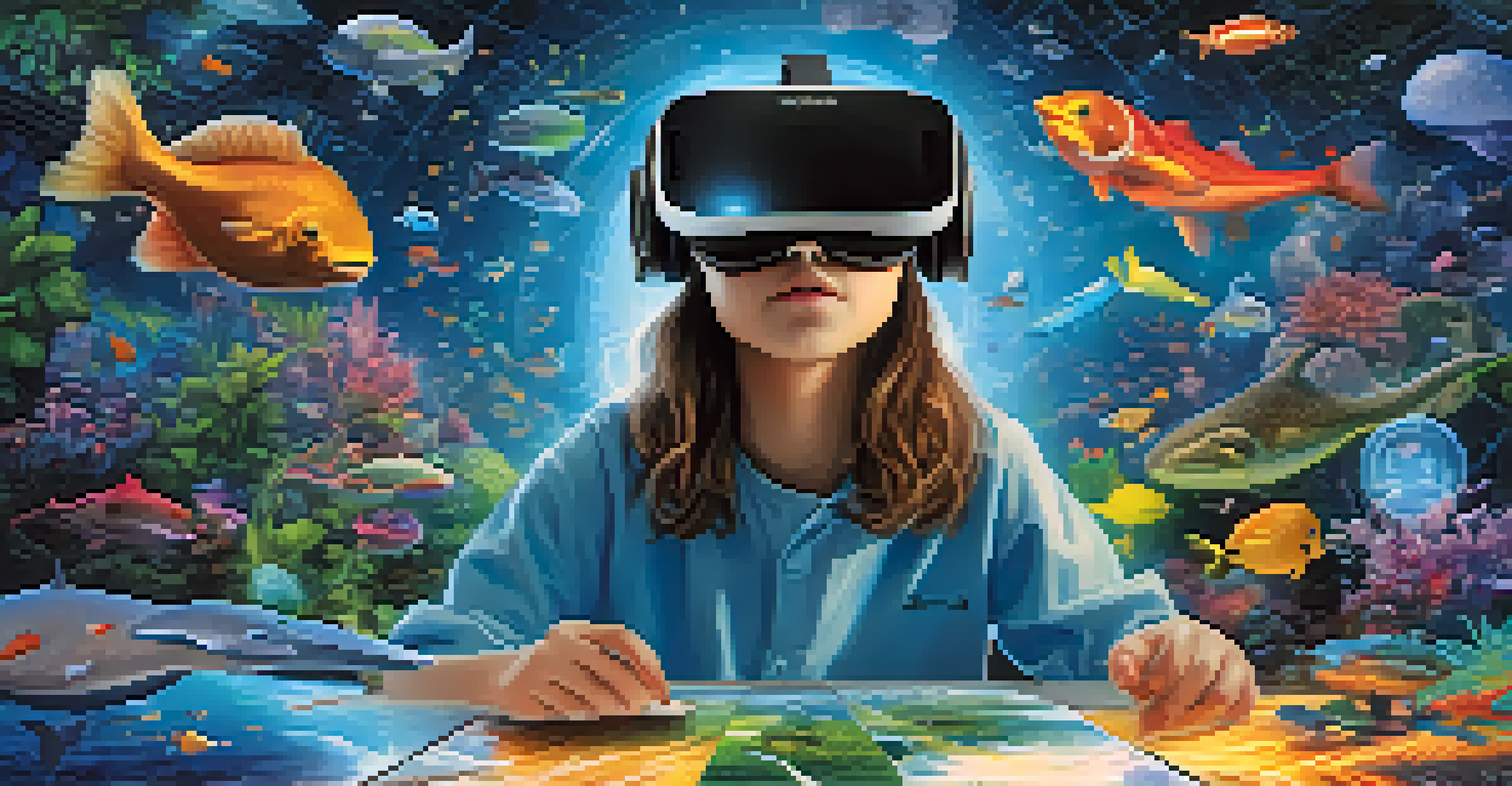Enhancing Critical Thinking through Gamification Techniques

Understanding Critical Thinking and Its Importance
Critical thinking is the ability to analyze information objectively and make reasoned judgments. It's essential in today's fast-paced world, where we're constantly bombarded with data and opinions. Developing these skills can lead to better decision-making in both personal and professional settings.
The ability to think critically is the key to understanding the world around us and making informed decisions.
Cultivating critical thinking allows individuals to navigate complex problems with clarity and confidence. This skill set not only enhances problem-solving abilities but also fosters creativity and innovation. As a result, critical thinkers are often seen as leaders in their fields.
However, many find it challenging to engage in critical thinking consistently. This is where gamification comes into play, offering a fun and interactive way to develop these essential skills.
What is Gamification and How Does It Work?
Gamification is the application of game-design elements in non-game contexts to motivate and enhance user engagement. Think of it as turning everyday tasks into a game, making them more enjoyable and rewarding. By incorporating elements like points, levels, and challenges, gamification can transform dull activities into exciting experiences.

This technique taps into our natural instincts for competition and achievement, encouraging us to push our limits. For instance, fitness apps often use gamification by rewarding users with badges for reaching milestones, making exercising feel less like a chore and more like a game.
Critical Thinking is Essential
Developing critical thinking skills leads to better decision-making and fosters creativity in both personal and professional contexts.
By integrating gamification into learning experiences, educators can create an environment that nurtures critical thinking. This approach encourages learners to engage with material actively rather than passively absorbing information.
Gamification Techniques That Enhance Critical Thinking
There are various gamification techniques that can specifically boost critical thinking. One popular method is using scenario-based learning, where learners are placed in realistic situations requiring them to analyze information and make decisions. This technique encourages deeper engagement and encourages learners to think critically about their choices.
Gamification is the use of game elements in non-game contexts to engage users and solve problems.
Another effective technique is incorporating puzzles or brain teasers into the learning process. These challenges require participants to apply logic and reasoning, skills that are fundamental to critical thinking. For example, escape rooms often involve solving intricate puzzles that demand collaboration and critical analysis.
Lastly, incorporating feedback loops is vital in gamification. Providing timely feedback helps learners reflect on their decisions, understand their thought processes, and improve their critical thinking skills over time.
Case Studies: Successful Gamification in Education
Several educational institutions have successfully implemented gamification to enhance critical thinking. For instance, a university introduced a game-based learning platform where students competed in teams to solve case studies. This approach not only improved engagement but also fostered collaboration and critical analysis among peers.
In another example, a high school integrated gamified elements into their science curriculum, allowing students to earn points for conducting experiments and presenting findings. This method encouraged them to think critically about their hypotheses and outcomes, leading to a deeper understanding of scientific concepts.
Gamification Enhances Learning
By incorporating game elements into educational settings, gamification makes learning more engaging and encourages active participation.
These case studies illustrate that when gamification is thoughtfully integrated into educational settings, it can significantly enhance critical thinking skills while making learning enjoyable and impactful.
Challenges of Implementing Gamification
While gamification has proven benefits, implementing these techniques isn't without challenges. One common issue is ensuring that the gamified elements align with learning objectives. If the game mechanics overshadow the educational content, learners may not develop the intended skills.
Another challenge is maintaining engagement over time. Initially, gamification may captivate learners, but interest can wane if the activities become repetitive or fail to offer new challenges. Therefore, it’s crucial to continuously evolve the gamified experience to keep participants motivated.
Lastly, not all learners respond similarly to gamification. Some may thrive in a competitive environment, while others may feel overwhelmed or discouraged. Understanding individual differences is key to creating an inclusive gamified experience.
Future Trends in Gamification and Critical Thinking
As technology continues to evolve, the future of gamification in enhancing critical thinking looks promising. Virtual and augmented reality are emerging as powerful tools that can create immersive learning experiences. These technologies can simulate real-world challenges, providing learners with opportunities to practice critical thinking in a controlled environment.
Additionally, artificial intelligence is set to personalize gamified experiences, tailoring challenges and feedback according to individual learning styles. This customization can better support diverse learners and promote critical thinking more effectively.
Challenges in Gamification
Implementing gamification can be challenging, as it requires aligning game mechanics with educational goals and catering to diverse learner needs.
As we explore these advancements, it's essential to prioritize pedagogical strategies that foster critical thinking. By combining innovative technologies with sound educational practices, gamification can become a transformative tool in learning.
Conclusion: The Power of Gamification in Learning
In conclusion, gamification presents an exciting opportunity to enhance critical thinking skills in engaging and interactive ways. By using game elements, educators can create dynamic learning environments that encourage deeper understanding and analysis. The combination of fun and learning can lead to more effective skill development.
As we continue to explore the potential of gamification, it's essential to remain mindful of its challenges and adapt strategies accordingly. This ensures that the focus remains on fostering critical thinking rather than merely entertaining students.

Ultimately, by embracing gamification, we can not only make learning more enjoyable but also equip learners with the critical thinking skills they need to navigate an increasingly complex world.